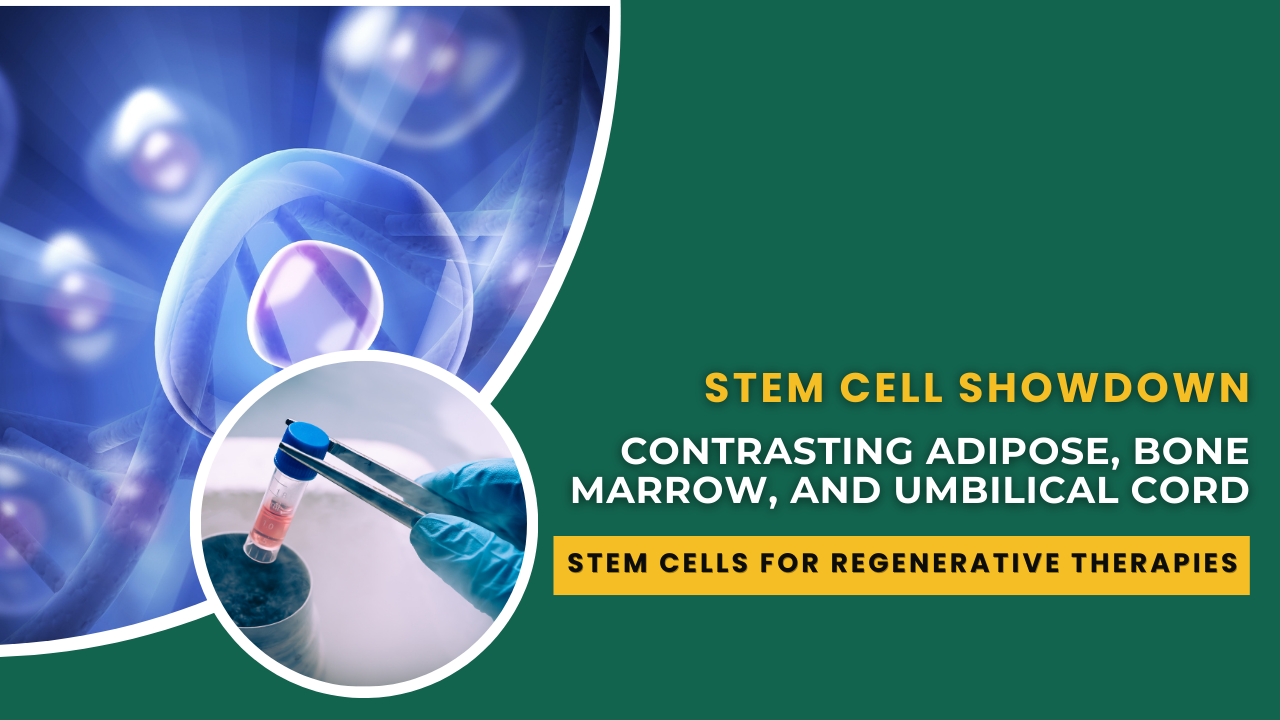Stem Cell Showdown: Contrasting Adipose, Bone Marrow, and Umbilical Cord Stem Cells for Regenerative Therapies
Nov 26, 2023
In the realm of regenerative medicine, stem cells have emerged as a revolutionary tool for healing and tissue repair. Among the various sources of stem cells, Adipose and Umbilical Cord-Derived Stem Cells have shown remarkable promise, standing out in comparison to the traditional Bone Marrow Stem Cells.
Exploring Umbilical Cord Stem Cells:
Umbilical Cord Tissue-Derived Stem Cells, harvested from the umbilical cord post-birth, boast incredible regenerative potential. Their youthfulness, rich in undifferentiated cells and growth factors, offers robust healing properties. Studies suggest these cells have lower immunogenicity and higher proliferative capacity, making them an attractive option for regenerative therapies.
Advocating for Adipose-Derived Stem Cells:
Adipose-Derived Stem Cells, sourced from adipose tissue or fat, represent a readily accessible and abundant reservoir of stem cells within the body. These cells are noted for their multipotency and ease of extraction, offering a minimally invasive procedure. Studies demonstrate their effectiveness in tissue repair, inflammation modulation, and promoting angiogenesis, showcasing their therapeutic versatility.
Comparing to Bone Marrow Stem Cells:
While Bone Marrow Stem Cells have long been utilized in regenerative medicine, their collection process can be more invasive. Their regenerative capacity might be affected by donor age, leading to reduced effectiveness compared to the youthful Umbilical Cord and readily available Adipose Stem Cells.
The Future of Regenerative Medicine:
The regenerative potential of Adipose and Umbilical Cord-Derived Stem Cells marks a paradigm shift in healthcare. Their unique characteristics, coupled with their availability and potency, suggest a bright future for regenerative therapies.
Conclusion:
In the ongoing stem cell showdown, Umbilical Cord and Adipose-Derived Stem Cells emerge as formidable contenders, offering superior regenerative potential and ease of extraction compared to Bone Marrow Stem Cells. As research continues to unveil their remarkable properties, these youthful and versatile cells pave the way for groundbreaking advancements in regenerative medicine.

